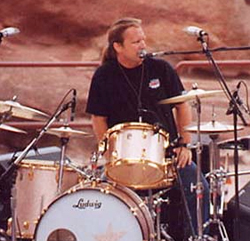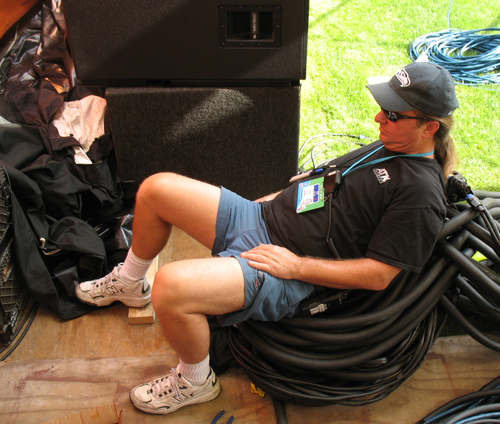
At Northwest he learned from the greatest teachers anyone could wish to have: “Richard Irwin taught me how to mix. Bob Sterne, one of the owners, taught me about life and how to deal with people. And David Reynolds, ‘Snake,’ taught me how to mix monitors, how to get things the way the band likes it.”
Over his career Sanders has worked with some of the most recognizable artists of the past 30 years: Stevie Wonder, CSN, Styx, George Benson, The Cars, Joni Mitchell. The list goes on, but it was just prior to the Eagles “Long Run” tour that he got his nickname, “Redford.”
“We built the tour’s PA with Pioneer TAD, the first company in the US to use the TAD stuff, with the first Beryllium drivers. We sent it down to rehearsals at Francis Ford Coppola’s place, the same soundstage they parted the Red Sea for The Ten Commandments,” he explained.
Snake and Irwin went ahead, leaving him to build and ship bits of gear as needed as they tweaked the system. “I’d get a phone call in the middle of the night saying, “We need a 16-pair XLR to XLR, and I need four of them going the wrong way. I’d build it and ship it first thing in the morning.”
When he finally did get down to the soundstage, rehearsals were well underway. Security was tight, and when Sanders walked in with a four-day beard, short hair, and mirrored sunglasses, the first thing Glen Frey said was “Who in the f@#k is that?”
““Don Henley’s drum tech at the time, Tony Taibi, replied, ‘I don’t know, but he looks like Robert Redford.’” The name stuck.
Redford stayed with Northwest through 1983, when it was taken over by Maryland Sound. After the change of ownership, he met and began working with Frankie Valli. “Pablo Wheeler and I,” he recalled, “we had about 72 hours to put together a PA system that consisted of a Northwest monitor system and a Maryland Sound front end. Then we went on the road and did 70 shows over the summer.”
Five years later, in 1987, he says, was the last time he mixed wedges, “I went out front in ’87. I’m done with monitors, that’s a young man’s sport, there.” He also left Maryland to go independent that year. At the time he’d been doing monitors for Stevie Wonder for several years, and they’d asked him to take over Front of House, but that wasn’t the only change Wonder’s camp was fixing to make. In addition to bringing Sanders out front, they left Maryland Sound behind.
“Push came to shove; young Redford had to go,” Sanders said of the move. He stayed with Wonder until 1991, in that time mixing one of the biggest gigs of his career, an outdoor show for approximately one million people.

